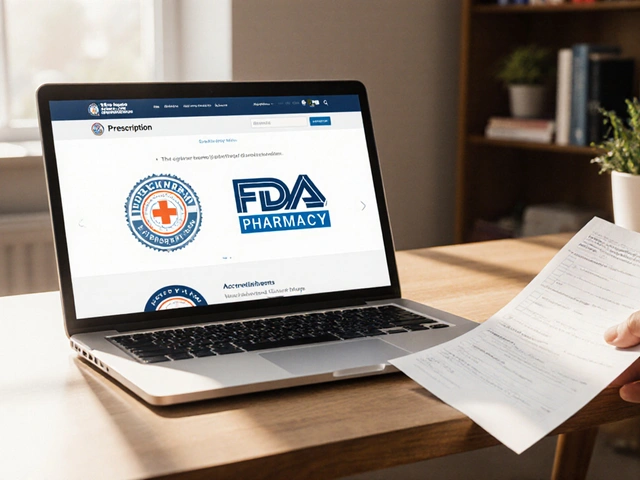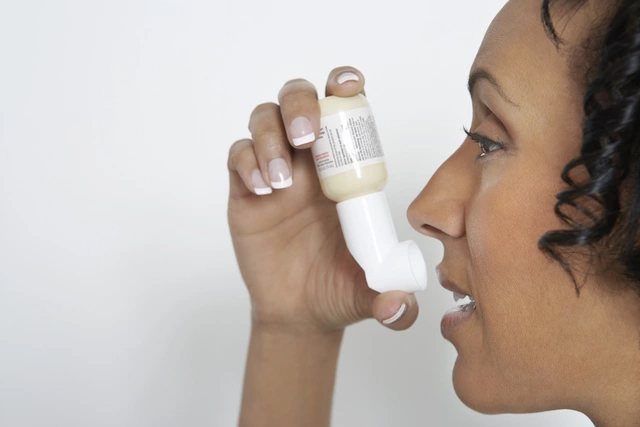Age and Sex in Bioequivalence Studies: What Regulators Really Require

When a generic drug hits the shelf, you assume it works just like the brand-name version. But here’s the catch: most bioequivalence studies that prove this are done on young, healthy men. That’s not just outdated-it’s risky. For drugs taken by women, older adults, or both, this gap can mean real differences in how well the medicine works-or how many side effects you get.
Why Bioequivalence Studies Used to Ignore Women and Older Adults
For decades, bioequivalence (BE) studies relied on a simple model: healthy men between 18 and 40. The logic? They’re less variable. No hormonal cycles. No pregnancy risks. No chronic conditions muddying the data. It made trials cheaper and easier to control. But this approach ignored a basic fact: men and women don’t process drugs the same way. Women often have slower stomach emptying, different fat-to-muscle ratios, and variations in liver enzymes that break down medications. Older adults have reduced kidney and liver function, altered body composition, and often take multiple drugs that interact. The problem? A drug that works perfectly in a 25-year-old man might be too weak-or too strong-in a 70-year-old woman with kidney issues. And if the bioequivalence study never tested her, no one knew.What the FDA Now Demands (2025 Update)
In May 2023, the U.S. Food and Drug Administration updated its draft guidance on bioequivalence. It didn’t just nudge the industry-it drew a line. If a drug is meant for both men and women, the study must include roughly equal numbers of each. No more 80% male cohorts for drugs taken mostly by women. If the drug targets seniors-like blood thinners or thyroid meds-then you need participants 60 and older. Or you need to explain why you didn’t include them. The FDA also clarified something critical: you can’t just test young men and assume it applies to everyone else. That’s not science. That’s guesswork. And regulators are starting to reject applications that don’t reflect real-world users.How Europe and Brazil Compare
The European Medicines Agency (EMA) takes a different tone. Their 2010 guideline says subjects “could belong to either sex”-but doesn’t require balance. They care more about detecting differences between drug formulations than matching the patient population. Brazil’s ANVISA is stricter. They demand exactly equal male-female splits, no smoking, ages 18 to 50, and BMI within strict limits. No exceptions. It’s a hard line, but it forces sponsors to plan ahead. The real difference? The FDA now ties bioequivalence to real-world use. EMA still focuses on whether two pills behave the same in a controlled group. That’s why the FDA’s 2023 draft is a game-changer-it shifts the goal from “same in the lab” to “same in real life.”
Why Gender Balance Isn’t Just Fair-It’s Scientific
You might think: “If the drug works in men, why test women?” But data says otherwise. A 2017 study tested a common cardiovascular drug. In men, the generic looked bioequivalent. In women? It wasn’t. The point estimate was 79%-well below the 80-125% range that counts as equivalent. But because the study only had 14 people, and 11 were men, the overall result passed. A follow-up with 36 participants (half women) showed the original result was a fluke. That’s not an outlier. A 2023 University of Toronto study found that 37% of commonly tested drugs clear 15-22% faster in men than women. That’s not a small difference. That’s enough to make a drug ineffective-or cause toxicity. And it’s not just about hormones. Women tend to have higher variability in drug absorption. That means even if the average looks fine, some women might get too little or too much. Without enough female participants, you miss those extremes.Age Isn’t Just a Number-It’s a Pharmacokinetic Factor
For drugs like warfarin, levothyroxine, or metformin, age matters more than sex. Older adults absorb drugs slower. Their kidneys don’t filter as well. Their liver enzymes slow down. Many take five or more other drugs. All of this changes how a generic performs. The FDA now requires that if your drug is used mostly by people over 60, your BE study must include them. If you exclude them, you need a scientific reason-like safety concerns or difficulty recruiting. And even then, you must prove the results still apply. A 2021 analysis found that 63% of levothyroxine users are women over 50. Yet most BE studies for this drug enrolled fewer than 25% women-and almost none over 60. That’s not just underrepresentation. It’s a blind spot.Real-World Consequences of Poor Representation
This isn’t theoretical. In 2019, a generic version of a seizure medication was approved based on a study with only 8% women. Within months, reports poured in: women on the generic had more breakthrough seizures than on the brand. Later analysis showed the generic had lower absorption in women with higher body fat. Another case: a generic blood pressure drug. Older men did fine. Older women had spikes in blood pressure. The BE study? 100% male, ages 20-40. These aren’t rare. They’re predictable. And now, regulators are holding sponsors accountable.
What Sponsors Are Doing to Catch Up
Changing recruitment isn’t easy. Women are less likely to join clinical trials. They juggle caregiving. They worry about side effects. Sites report 40% longer recruitment times for gender-balanced studies. But the pressure is working. A 2022 survey found 68% of contract research organizations (CROs) now actively recruit women. They’re offering flexible hours, childcare support, and targeted outreach. Some sponsors are even running separate BE studies for different populations. One company tested a diabetes drug in men, women, and older adults-three separate trials. It cost more. But it got approved faster because the FDA didn’t question it.What You Need to Know as a Patient
You don’t need to understand pharmacokinetics. But you should know this: if you’re a woman, over 60, or taking a drug that’s been on the market for years as a generic, your experience might not match the study data. Ask your pharmacist: “Was this generic tested on people like me?” If they can’t answer, ask your doctor to check the FDA’s ANDA database. Some newer generics now list demographic details in their approval documents. And if you notice your medication isn’t working the same way it used to-especially after switching to a generic-don’t assume it’s in your head. Document it. Talk to your provider. It might be a bioequivalence gap.The Future: More Inclusive, More Accurate
The next five years will see more sex- and age-specific bioequivalence standards. The FDA is already working on criteria for narrow therapeutic index drugs-like warfarin and lithium-where small differences matter most. The EMA is reviewing its 2010 guideline. Expect updates in 2024 that push toward the FDA’s model. Canada and Australia are watching closely. The goal isn’t to make studies harder. It’s to make them smarter. To stop pretending that a 25-year-old man represents everyone. Because he doesn’t. And when we test drugs only on him, we’re not just missing data-we’re risking lives.Are bioequivalence studies still mostly done on young men?
Not as much as before, but it still happens. The FDA now requires balanced sex representation for drugs used by both men and women, and many sponsors are complying. However, older studies and some generics approved before 2023 may still reflect outdated practices. Always check if the drug’s approval data includes demographic details.
Why can’t we just use data from men for women’s drugs?
Because men and women metabolize drugs differently. Women often have slower clearance rates, higher body fat percentages, and different enzyme activity. A drug that works perfectly in men can be too weak or too strong in women. Relying on male-only data risks underdosing or overdosing women, leading to treatment failure or side effects.
Do older adults need separate bioequivalence studies?
If the drug is primarily used by people over 60, yes. The FDA requires inclusion of older adults in BE studies for such drugs-or a strong scientific justification for exclusion. Age affects how drugs are absorbed, distributed, metabolized, and excreted. A study done only on young adults may not predict how the drug behaves in an older body.
What’s the minimum number of participants needed in a bioequivalence study?
The EMA requires at least 12 evaluable subjects, but most studies enroll 24 to 36 to account for dropouts and ensure statistical power. For studies testing sex or age differences, larger groups (30+) are needed to detect meaningful variations. Small studies can miss real differences or create false ones due to outliers.
Can a generic drug be approved without testing it on women?
Only if the drug is intended exclusively for men, or if the sponsor provides strong scientific justification for excluding women. For drugs used by both sexes, the FDA now requires similar proportions of males and females. Excluding women without justification can lead to regulatory rejection or post-market safety issues.





Karen Ryan
November 25, 2025 AT 10:43Finally someone is calling this out. I’ve been on the same generic for years and noticed my anxiety spiked after switching - turns out the study was 90% men. No wonder I felt like a lab rat. 🤦♀️
Kaylee Crosby
November 26, 2025 AT 03:46My grandma switched to a generic thyroid med and started feeling dizzy. She’s 72. The label didn’t say a word about age testing. This isn’t just unfair - it’s dangerous. We need transparency, not just compliance.
Pharmacists should be required to say: ‘This was tested on people like you.’
Terry Bell
November 26, 2025 AT 21:40Man I used to think this was just corporate laziness but now I see it’s systemic. We test drugs on 20-year-old dudes because they’re ‘easier’ but then hand them to moms, grandmas, and people with diabetes and expect miracles. We’re not studying science here, we’re doing guesswork with side effects.
And yeah, it’s gonna cost more to test right - but how much does it cost when someone ends up in the ER because their blood thinner didn’t work? That’s the real bill.
Benjamin Gundermann
November 27, 2025 AT 23:53Look, I get it, the FDA wants to be woke and inclusive, but let’s be real - if you’re gonna test every demographic subgroup, you’re gonna need 10,000 subjects per drug. That’s not science, that’s a bureaucratic nightmare.
And who’s paying for it? You are. Your insurance premiums. Your taxes. They’ll just pass the cost on. Meanwhile, the same 12 people in a study get rolled into 5 different trials because they’re the only ones willing to show up.
It’s not about fairness. It’s about profit. They want to make you feel guilty for being a healthy young guy so you’ll pay more for meds that might not even be better.
Also, why are we even assuming men and women need different meds? Evolution didn’t design us to be pharmacologically identical, but that doesn’t mean we need 17 different versions of ibuprofen. I’m just sayin’.
Rachelle Baxter
November 29, 2025 AT 02:10It’s 2025 and we’re still having this conversation? Women have been getting underdosed or overdosed for decades because of lazy clinical trial design. This isn’t ‘woke science’ - it’s basic pharmacology. The fact that this is even controversial is embarrassing.
And don’t even get me started on the elderly. If your drug is used by 60%+ people over 60, you better test it on people over 60. Not ‘maybe’ - not ‘if convenient’ - REQUIRED. End of story.
Anyone who argues against this is either a pharma lobbyist or hasn’t watched their parent struggle with meds that don’t work. I’m done.
Dirk Bradley
November 29, 2025 AT 13:21While the intent behind the FDA’s revised guidance is laudable, one must not conflate demographic representativeness with scientific validity. The primary objective of bioequivalence studies remains the comparison of pharmacokinetic profiles between reference and test products under controlled conditions. Introducing heterogeneity through age and sex stratification may introduce confounding variables that obscure the core metric: AUC and Cmax equivalence.
Moreover, the regulatory precedent set by the EMA - which prioritizes formulation comparability over population mimicry - remains methodologically superior. One cannot reasonably expect a single study to simultaneously satisfy both bioequivalence criteria and sociodemographic equity targets without compromising statistical power.
One must ask: Are we optimizing for safety, or for performative inclusion?
Manish Pandya
November 30, 2025 AT 07:50As someone from India where most generics are used by elderly people with multiple conditions, I’ve seen this firsthand. My uncle took a generic blood pressure pill and his numbers went wild. Turned out the study was done on young men in the US.
It’s not just a US problem. This needs to be global. Regulators everywhere should require demographic breakdowns in approval docs. No more hiding behind ‘it passed the test’ when the test didn’t include anyone like the people taking it.
Lawrence Zawahri
November 30, 2025 AT 08:48THIS IS A GOVERNMENT POWER GRAB. They’re not protecting you - they’re controlling you. Why do they suddenly care about women and old people? Because they want to force drug companies to make more expensive meds. And then they’ll say ‘see? We made it safer!’ - while raising your co-pays.
They banned testosterone studies because ‘men are privileged’ and now they’re forcing gender splits? Hypocrites. This isn’t science - it’s politics in a lab coat.
And don’t tell me about ‘real-world use.’ Real-world use is people taking pills. Not filling out forms about their gender. The pill doesn’t care if you’re male or female - it’s chemistry, not identity.
They’re gonna make us all take 3 different versions of the same pill just to satisfy bureaucrats. Next they’ll want a version for left-handed people.
They’re not saving lives. They’re building a surveillance state disguised as healthcare.